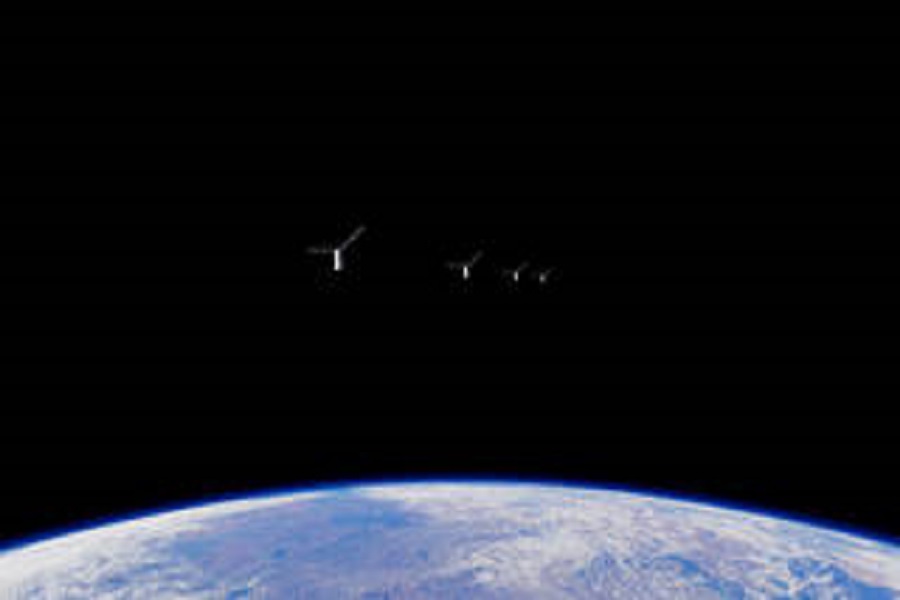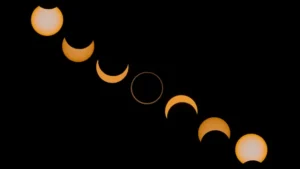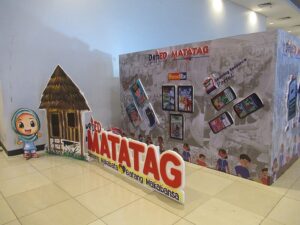NASA to Launch Autonomous Swarm of CubeSats for Deep Space Exploration

Photo Credits: NASA/Conceptual Image Lab/Ross Walter
NASA is preparing to launch a team of four CubeSats into Earth’s orbit this July to investigate their ability to cooperate independently without real-time guidance from mission control.
This experimental mission aims to test key technologies crucial for future deep space missions, where advanced autonomous spacecraft will play a vital role.
The CubeSats will be divided into two formations and will evaluate various technologies during the six-month-long mission named Starling.
Positioned approximately 355 miles above Earth with a spacing of around 40 miles between each spacecraft, Starling aims to pave the way for a future where swarms of satellites collaborate for scientific purposes in deep space.
Roger Hunter, program manager for NASA’s Small Spacecraft Technology program, expressed the significance of Starling, stating that the mission and its autonomous command and control capabilities for small spacecraft will enhance NASA’s potential for future exploration and scientific endeavors.
Starling will focus on testing four main capabilities. Firstly, the CubeSats will autonomously maneuver to remain in a cohesive group. Secondly, they will establish a flexible communication network among themselves. Thirdly, they will maintain awareness of each other’s relative positions.
Lastly, the CubeSats will respond to data from onboard sensors by independently executing new activities. Essentially, Starling seeks to create an autonomous community of small satellites capable of adapting to their environment and working together as a team.
Swarm technologies enable the collection of scientific data from multiple locations in space, the establishment of self-repairing networks, and spacecraft systems that can respond to environmental changes without constant communication with Earth.
Additionally, a swarm of spacecraft is more resilient to failures as the redundancy within the team compensates for any individual malfunctions.
Starling’s first mission will test a suite of four technologies. The ROMEO (Reconfiguration and Orbit Maintenance Experiments Onboard) software enables autonomous planning and execution of maneuvers without direct operator input. The CubeSats will utilize ROMEO to fly in a cluster and autonomously plan and execute trajectories.
The mission will also assess the capabilities of a Mobile Ad-hoc Network (MANET), which is a communication system composed of wirelessly linked devices that automatically reroute data based on network conditions.
Starling spacecraft equipped with crosslink radios and MANET software will establish and maintain communication between satellites.
Each CubeSat in the swarm is equipped with “star tracker” sensors typically used for self-orientation in space. However, in Starling’s case, these sensors will also track the other swarm spacecraft using a technique called StarFOX (Starling Formation-Flying Optical Experiment). By using the light from fellow satellites and specialized software, the CubeSats will remain coordinated within the swarm.
Finally, the Distributed Spacecraft Autonomy (DSA) experiment aims to demonstrate the swarm’s ability to collect and analyze science data onboard and optimize data collection collectively. If one satellite detects an interesting phenomenon in Earth’s ionosphere, it will communicate with the others to observe the same event.
This autonomous reaction to observations will enhance future NASA science missions’ data collection capabilities.
Following the primary mission, Starling will collaborate with SpaceX’s Starlink satellite constellation to explore advanced space traffic management techniques between autonomous spacecraft operated by different organizations.
By sharing trajectory intentions, NASA and SpaceX will demonstrate an automated system ensuring the safe operation of their satellites in proximity within low-Earth orbit.
Roger Hunter emphasized the importance of Starling 1.5 in developing rules for space traffic management, marking a significant step forward in understanding how autonomous spacecraft can operate safely alongside one another.
By embracing robotics and enabling networked, coordinated, and autonomous spacecraft, NASA is propelling exploration, both manned and unmanned, to new frontiers.
These advancements ensure that humanity can conduct more extensive and groundbreaking scientific research than ever before.








